How difficult is it to travel by road in an electric car? Chronicle of a trip between Bogotá and Bucaramanga

Every year, there are more 100 percent electric vehicles on Colombian roads and in cities. This segment has seen dizzying growth in recent years. Between 2023 and 2024 alone, sales nearly tripled, going from 3,708 battery-powered vehicles to 9,193 units sold last year nationwide, led by Bogotá, Medellín, and Cali, according to figures from the National Association of Sustainable Mobility (Andemos).
This year, the figures are even better, as 3,447 electric cars had been registered in the country by March, almost all of the vehicles sold in 2023. This demonstrates that the sector is not only growing rapidly, but that there is also growing interest in this type of mobility. The truth is that the global impact of electric mobility is key to addressing one of the major environmental problems facing the planet today: rising temperatures due to greenhouse gas emissions.
Unlike combustion and hybrid vehicles, 100 percent electric vehicles generate no gas emissions and are therefore one of the tools to combat climate change. Changing the vehicle mix also helps address public health problems such as air pollution in large cities, as is the case in Colombia where, according to the most recent IQAir report, the air in all major cities is polluted and does not meet World Health Organization standards.
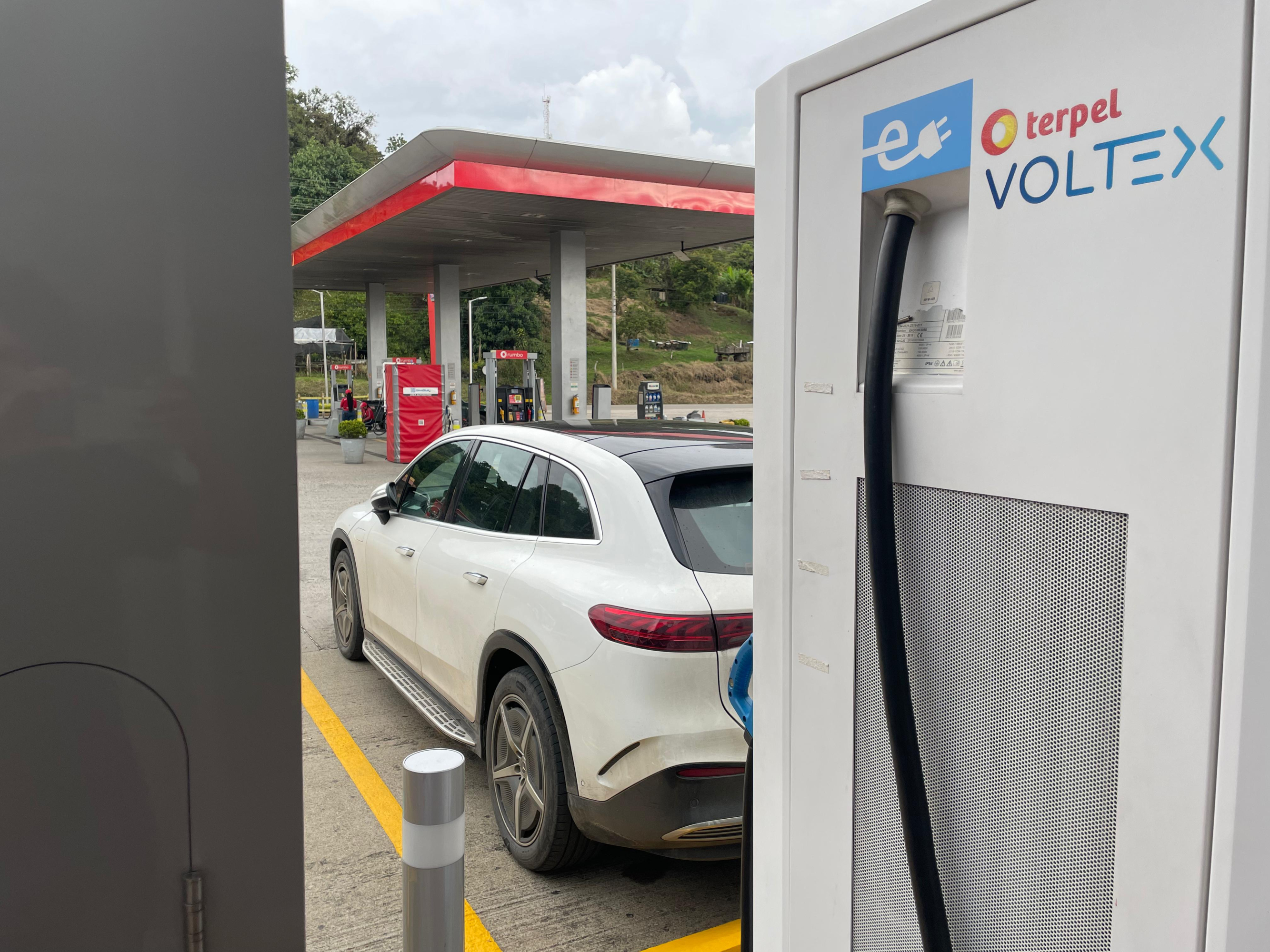
Despite the rapid increase in electric vehicles, inter-city charging infrastructure is limited. Photo: Edwin Caicedo. EL TIEMPO
However, although electric mobility is the future, there are still many challenges in the present, especially in Colombia. This journey, which should be simple, begins with a luxury German SUV. A Mercedes-Benz EQS 450 4Matic. The brand's flagship and a seven-seat electric family car, it also offers one of the longest ranges available in the national market, ranging from 513 to 616 kilometers with a charging capacity of 108.4 kW/h and a Type 1 charging port that also offers a fast charging option with a CCS1 connector.
With that in mind, the distance of this trip shouldn't be a problem, as the route will be Bogotá-Bucaramanga, round trip, between the steep mountains of the Cundiboyacense plateau and the challenging curves of the Chicamocha Canyon in Santander. The distance between these two cities is only 426 kilometers, but the demanding climbs and the type of driving make it mandatory to stop halfway to refuel.
The reasons are simple: no one wants to arrive at their destination with an empty tank (even if they're driving a gasoline -powered car), and on a trip that averages nine hours, it's essential to take a break to stretch your legs and have lunch. Reviewing the charging infrastructure, we see that there are two options for recharging your vehicle at the Terpel Voltex electric stations located throughout the country: one at the entrance to Tunja and another at the entrance to Santana (right halfway). Both locations have chargers with fast-charging technology, allowing us to recharge the battery in an hour and a half, enough to continue on our way and enjoy a good lunch without rushing.
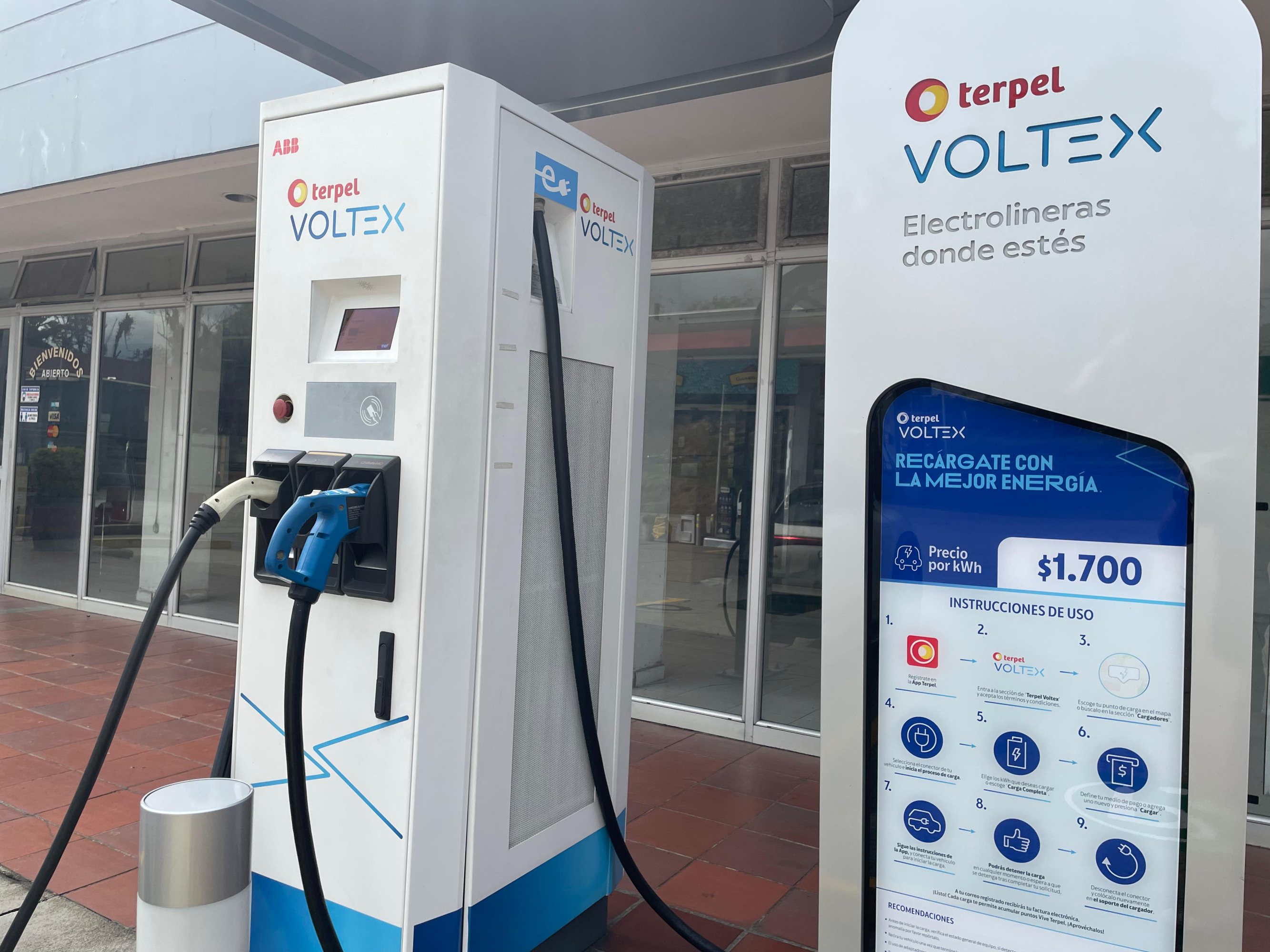
In Colombia, Terpel Voltex has invested in this type of mobility and has 24 charging stations. Photo: Edwin Ciacedo. EL TIEMPO
But as we began our journey, after driving just over 100 kilometers through the Cundiboyacense savannah with the driving response and comfort that only a luxury vehicle like the EQS 450 can provide, we encountered our first problem: although three charging cables are available at the Terpel Voltex charging stations, each one has a different type of connector. The world of electric cars currently has different connectors, just like the days when every cell phone had its own type of charger. There are three most common: type 1, type 2, and CHAdeMO.
In the case of new-generation European vehicles, most come with a Type 1 connection. And although many people carry adapters in their vehicles to use other connectors, this wasn't the case for us. Upon arriving at the charging station, we found a Swedish and a German car, a Volvo SUV, and an Audi SUV already waiting to charge. Between the two, it would take them just over an hour and a half to connect, so, considering we still had plenty of range and enough battery to make it to the next charger, we decided to continue to Santana and stop there for lunch.
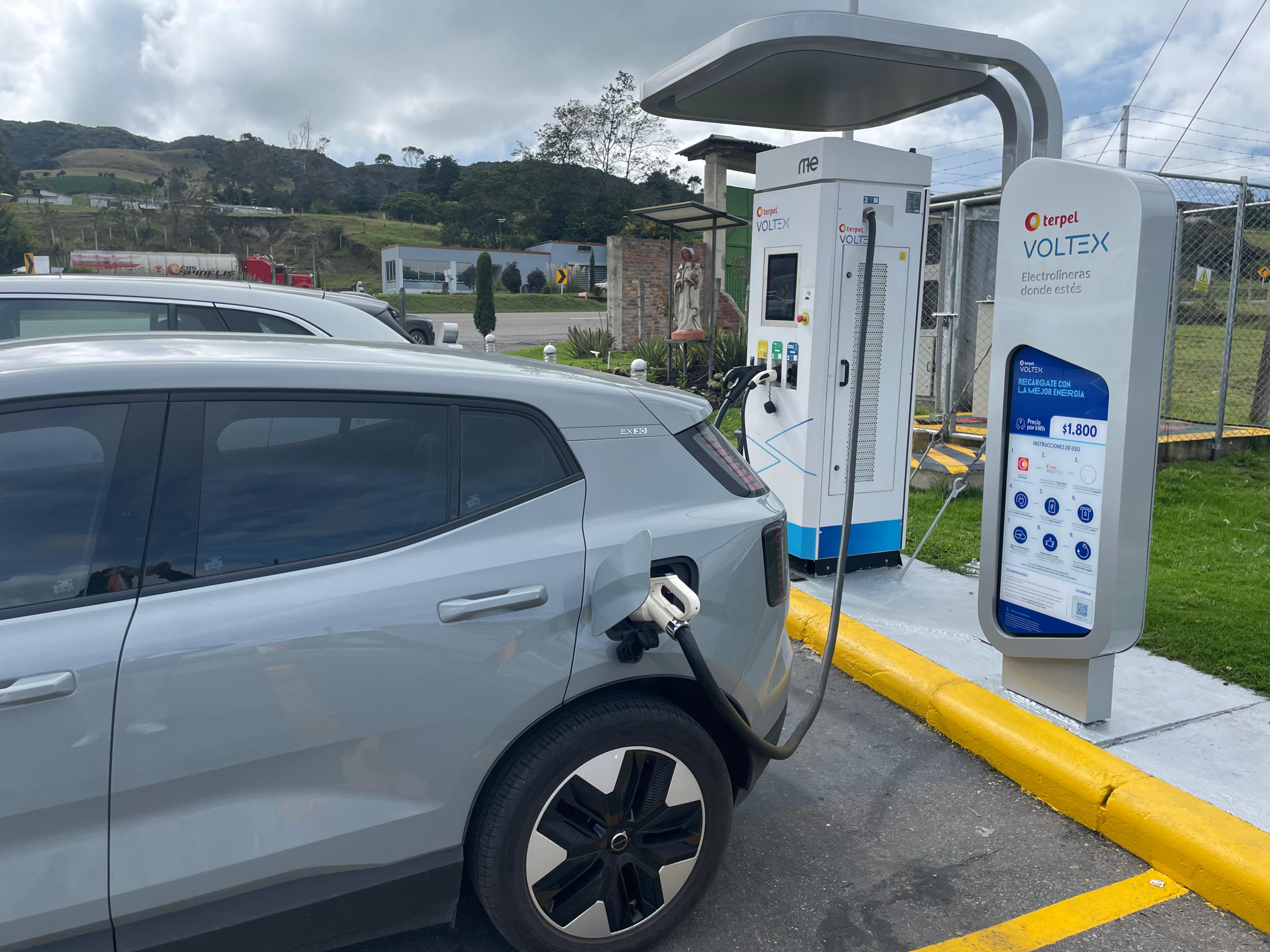
Although Voltex stations have three connectors, each one has a different type of port. Photo: Edwin Caicedo. EL TIEMPO
In Santana, it was much simpler. There was no one charging, so we just arrived, plugged in the vehicle, and started charging. While we were charging, we had lunch at one of the restaurants near the electric station, located at the entrance to town. The cost per kilowatt was $1,700, and the charging speed was 40 kWh. Considering we arrived with more than 50% charge, we recharged at about 50 kWh, which cost $85,150, a very low price for the type of truck we were in, a vessel more than five meters long and almost two meters wide that attracts all eyes.
From there came the challenging stretch. The curves, descents, and climbs of Pescadero, in the heart of the Chicamocha Canyon, where the almost instantaneous torque of an electric vehicle made all the difference. For those accustomed to driving a combustion engine and being forced (in some cases) to rev the engine to navigate the difficult terrain of Colombia, an electric car becomes a dream.
Without worrying about overheating the engine, burning fuel by revving above 4,000 rpm, or the car stalling, we easily cruised through the shorter but more demanding stretch, where the EQS 450, which is a family SUV, took advantage of the opportunity to recharge itself on the descents and carry us smoothly on the climbs.

The EQS 450 4Matic is one of the electric vehicles with the longest range on the Colombian market. Photo: Edwin Caicedo. EL TIEMPO
Upon arriving in Bucaramanga, with more than 70% of our cargo available, we set out to enjoy ourselves. We explored its wide main avenues, such as Carrera 33 and the Bucaramanga-Floridablanca Highway, with perfectly maintained roads and three- and four-lane options. We visited family, spent time with friends, and took advantage of the EQS 450's seven-passenger capacity to take everyone out for a ride and lunch. As the weekend approached, we decided on Friday to load up the car and return on Sunday.
We weren't low on fuel, as we had arrived on Wednesday and used the vehicle's 110V charger to recharge overnight. We were confident in the city's only Terpel Voltex charging station. However, on Friday morning, the charging station experienced an error. Terpel's technical support informed us that they would need to send a technician to inspect the station and that this could take five business days.
At the time, we weren't worried. Electric vehicles are growing in the country, and a city like Bucaramanga, one of the largest and most important in Colombia, surely should have more charging infrastructure available. That's what I thought. Upon investigation, I found that in the "city of parks," the Electrificadora de Santander (ESSA), part of Grupo EPM, had installed several fast-charging stations in the city in response to the growing electric vehicle fleet.
We were confident that, as is the case in Bogotá with Enel, which also has electric chargers distributed throughout the city, Bucaramanga could use ESSA chargers by paying the price they had defined per kilowatt, which normally averages $1,800 pesos.
However, upon arriving at the ESSA charging stations, we encountered two problems: the first is that you need a card, which is only given to those with an ESSA credit card (i.e., travelers or anyone who, like us, wants to use the chargers freely can't). The biggest problem was that the chargers had been disabled for months, according to other electric car users I met in the city. The reason was supposedly maintenance.
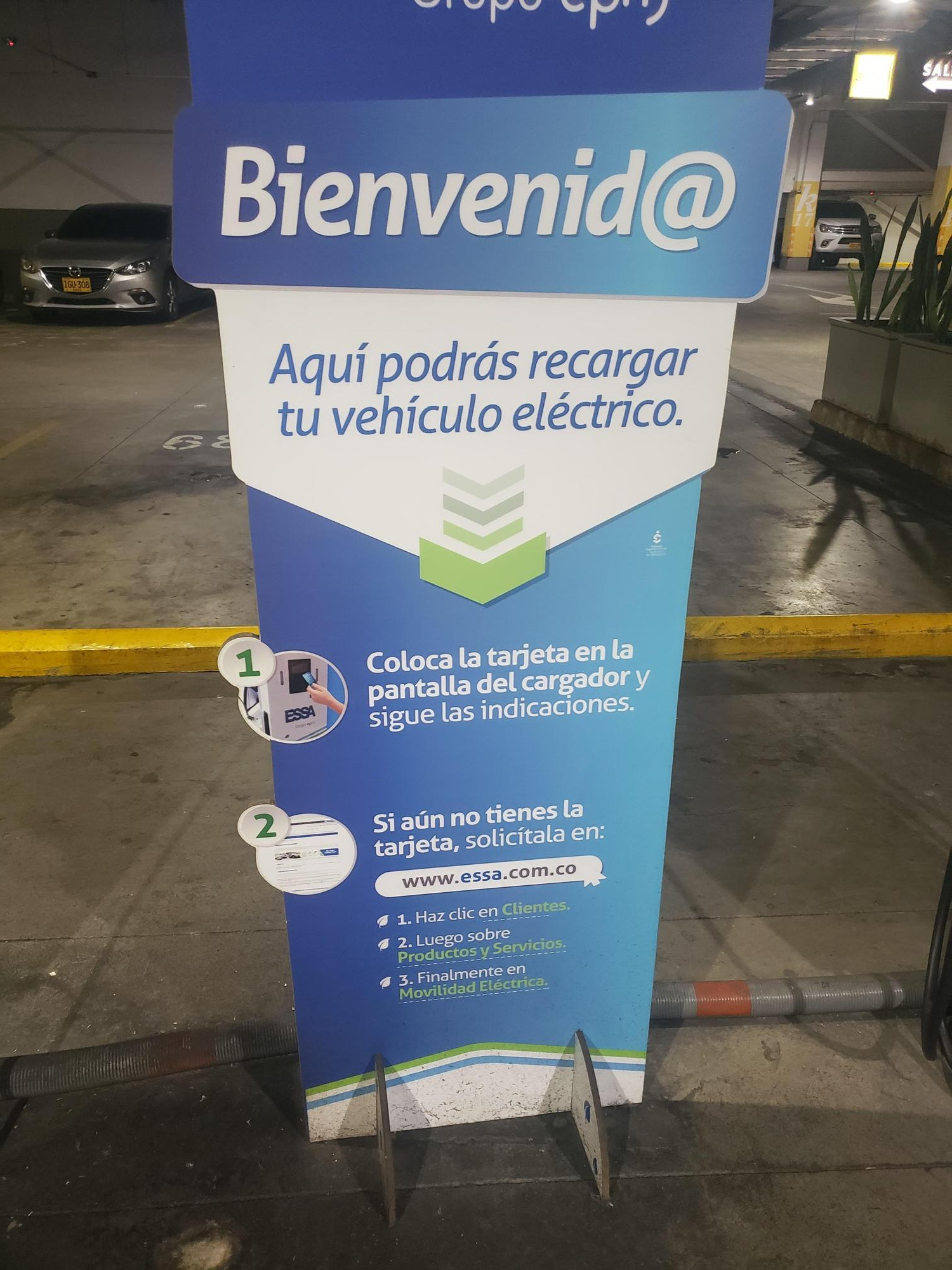
To use ESSA chargers, you need a special card. Photo: Private archive
However, we still weren't worried. Considering that nearly 2,000 electric cars had been sold in Bucaramanga between 2024 and 2025, it was impossible for there not to be more charging infrastructure. So we decided to go to a shopping center in the city that had a charger and park the car there so we'd have enough charge for the return trip to Bogotá. The problem, however, was that with so many vehicles and so few available charging spaces, it was impossible to find an available charger.
At the La Quinta Shopping Center, there were a BYD and an Audi charging; at the La Florida Shopping Center, there were an Audi and a Kia charging; and at the Cacique Shopping Center, the charging stations belong to ESSA and were being repaired. It was only then that I began to think: what now? Why doesn't one of the largest and most important cities in the country have a charging infrastructure that meets the needs of a market of more than 2,000 vehicles?
The car, in any case, still had enough charge to return to Santana, given the EQS 450's generous range. However, no one wants to drive worried about not having enough fuel to reach their destination. And since I didn't want to arrive in a hurry, I decided to look for another option: I was able to charge it with a private charger, which gave me enough range to leave safely on Sunday with an 80% battery.
With that load, we arrived calmly to Santana, again halfway between Bucaramanga and Bogotá, without haste on a road that sometimes allowed us to fully enjoy a luxury German car that isn't afraid of curves and that takes advantage of every meter of the straights, but that at the same time allows us to enjoy the beauty and immensity of the mountains that divide the country's complicated geography.
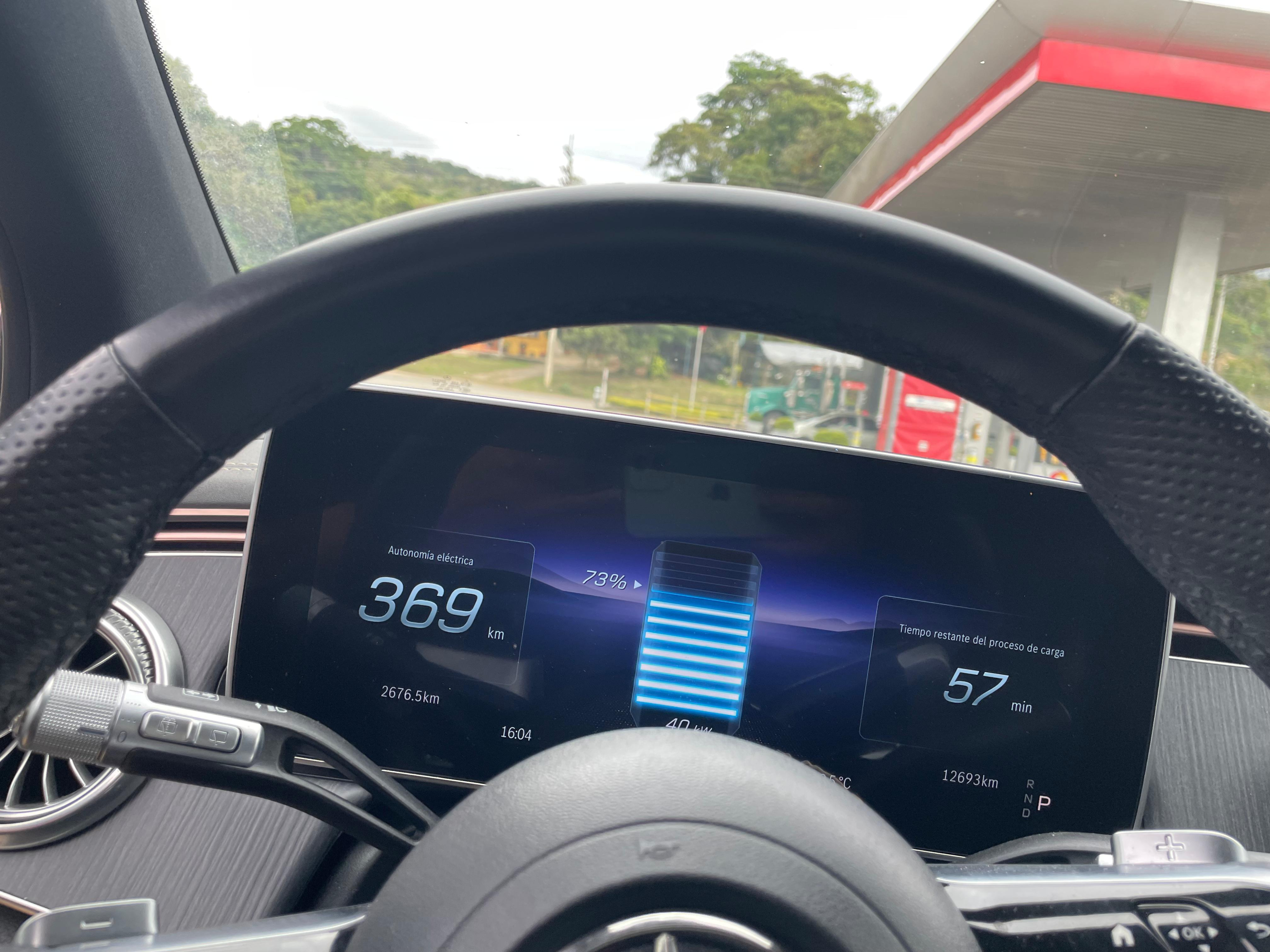
In just one hour, the EQS 450 loaded what we needed to continue our journey. Photo: Edwin Caicedo. EL TIEMPO
In Santana, we charged up, and adding in a much-needed lunch break, it took us nine and a half hours to return to the capital. A peaceful journey that left us, as travelers, with several questions: Why does a city like Bucaramanga have such limited charging infrastructure when it has so many electric vehicles? Why does the ESSA only allow residents of the city to use its chargers, and why have they been in repair for so many months? Why does Terpel Voltex (the best intercity charging option in the country) only have one charging station in the capital of Santander?
If Colombia has already begun to fill up with electric cars, and more are likely to continue to be sold, what's missing before it starts filling up with chargers? Because with the current ones, the dream family trip we enjoyed a few days ago could have turned into a nightmare, if not for the long battery life we were counting on. The future of mobility is electric, but for that future to happen, we need chargers—and lots of them.
Environment and Health Journalist
eltiempo





